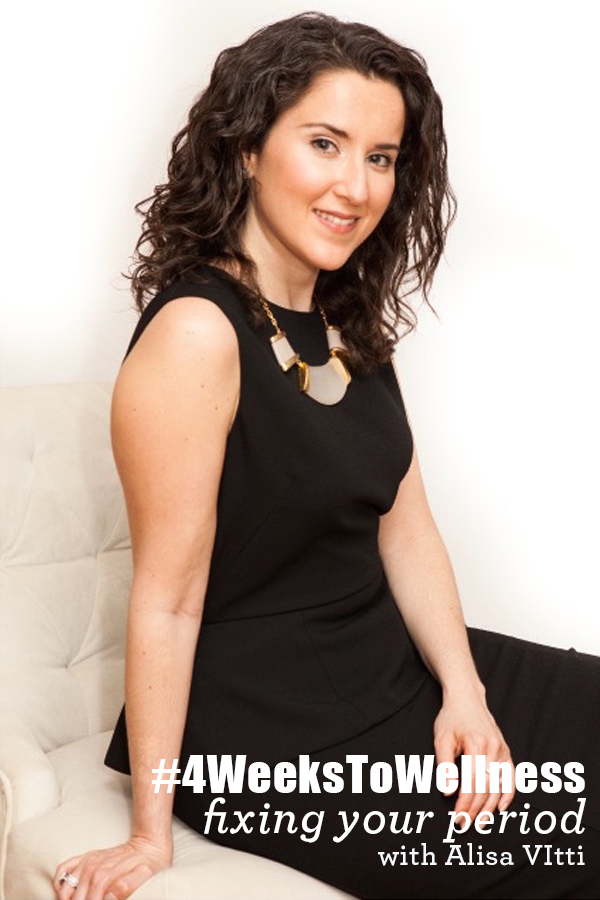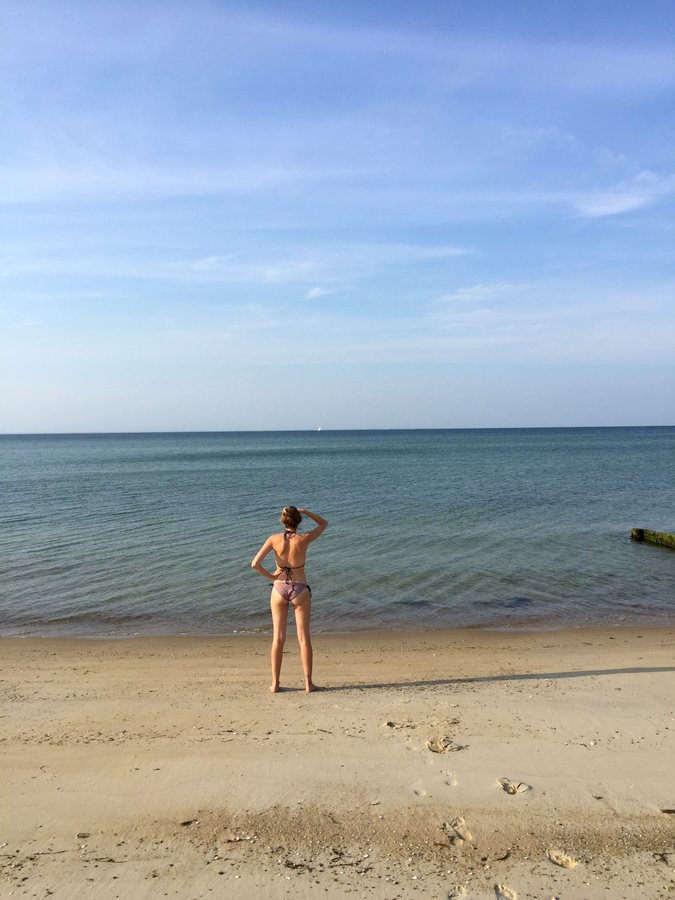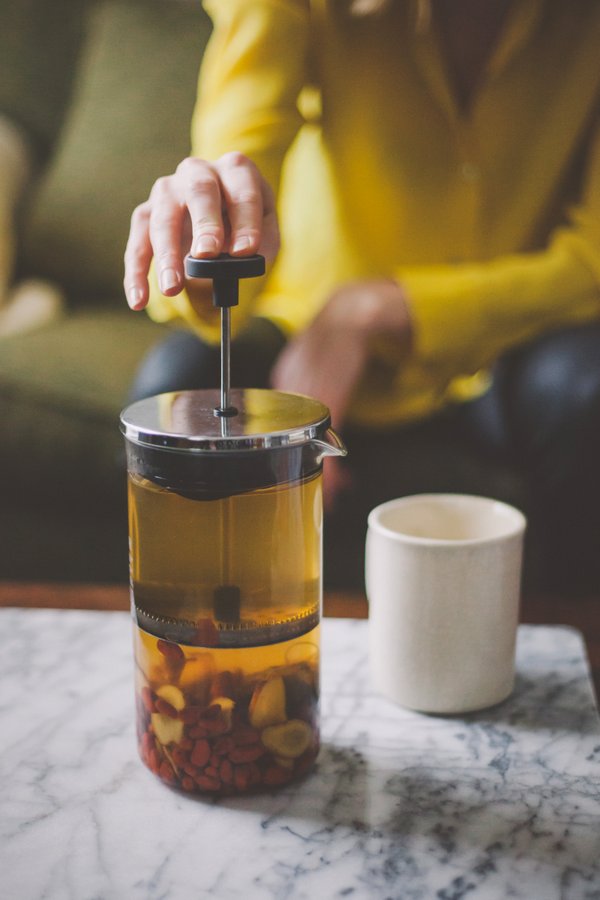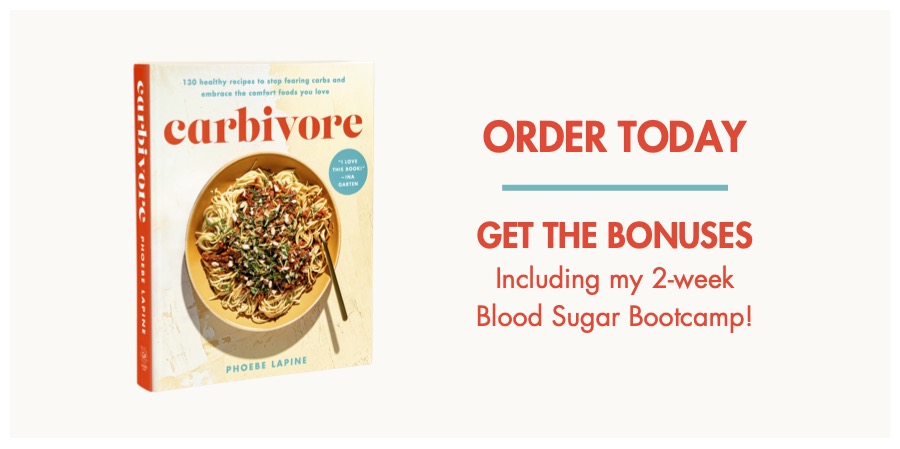Over the last few weeks, I’ve gotten countless messages, emails and texts about small ways in which The Wellness Project has inspired you to clean up your routine and tackle a healthier life. Nothing makes me happier. Really.
It’s all about the baby steps, folks. And if there’s one thing I hope you can learn from my experience, it’s that you don’t need to do all of the above, all at once. Just start. Somewhere. Anywhere. And take it one day, week, month at a time.
I envisioned this series as a little companion guide, and also a way to highlight conditions that I may not have suffered from personally, but require similar lifestyle shimmies to overcome.
Each #4WeekstoWellness post features one of my favorite experts weighing in on their top four lifestyle changes. I’m so excited to have Alisa Vitti in the mix to give you a month-long roadmap for fixing your period.
Alisa was ahead of the curve when it came to healing her PCOS with diet, movement and daily tweaks. I’ll let her tell you more about her journey below. But suffice it to say, that ever since I decided to change my approach to my wellness, her work has been one of my central inspirations. If you’ve read the book, you’ll also know that she was one of the featured experts in the Rag Time chapter!
I can tell you firsthand how powerful her concept of “cycle-syncing” is. It completely changed my relationship to my period, and my ovaries, skin, mood and general lifeblood thank her immensely.
Read on for Alisa’s 4-step guide. And if you’re looking to design your own #4WeeksToWellness challenge, I have a free e-book supplement that you can download here. You just have to purchase the book to get access.
Are there any other ailments, chronic conditions, challenge areas you want me to address in future 4 Weeks to Wellness guides? Let me know in the comments!
From one healthy hedonist, to another,
Xoxo
Phoebe
Whether it’s common PMS symptoms like cramps and mood swings or a condition, like fibroids or endometriosis, just about every woman out there has, at one time or another, battled some sort of disruption in her hormonal health. I certainly did — at 20 years old, I was 200 pounds, covered in painful pimples, and diagnosed with a condition called Polycystic Ovary Syndrome (PCOS), which my doctors said would lead to diabetes, obesity, heart disease, and even cancer. The also told me I’d likely never conceive naturally. They even told me the condition had no cure and that I’d be stuck on medications for the rest of my life to manage my symptoms.
I said no way to the standard medical protocol and paved my own path by researching and formulating a food and lifestyle regimen that not only fixed my symptoms; it reversed my PCOS completely. Since developing my FLO Living protocol 16 years ago, I’ve helped tens of thousands of women all over the world deal with everything from PMS and fibroids to endometriosis and more at the FLO Living Hormone Center. Food is the most powerful drug we have at our disposal, and when paired with the right supplements and supportive habits, it can completely transform your health and your whole life!
I mean it when I say any period problem across the board can be put into remission naturally with this approach. To truly heal your endocrine dysfunction, it’s best to commit to the MonthlyFLO program which will keep you informed, accountable, and feeling supported throughout your healing journey. But if you’re just starting out in your hormonal recovery and you want to test the waters, there are four easy baby steps you can make immediately, and you can spread them out over four weeks to really ease into your brand new way of life.
Resist the type-A urge to alter every factor in your life at once — true, lasting, impactful change happens gradually over time, and trying to do everything at once puts you at risk for self-sabotage and falling off the wagon. If you have a positive experience over the next four weeks and start to see small changes in your body and mind (and trust me, you will), then that’s a big indication that you’re on the right path and now’s the best time to take control of your health and fully commit to the FLO Living protocol.
Before you begin, take the free Period Type Quiz to figure out what your period color is trying to tell you about your hormone imbalance. Next, download my new MyFLO app to start tracking your symptoms and learning the right actions to take at each phase of your cycle. Then try out the four-week guide below and see the profound effects just a few small changes can make.
Week 1: Balance Your Blood Sugar
Rebalancing your blood sugar and getting your metabolism back on track is the foundational piece to hormone recovery. I can say with total certainty that not a single woman who first arrives at the FLO Living Hormone Center to resolve her period issues — whether those include cramps, low libido, PMS, PCOS, or something else — has stabilized blood sugar when she walks in our virtual door.
Why does this matter so much? Our bodies and brains rely on a form of sugar called glucose for fuel. That means that we do need some amount of sugar in our diets, but not nearly as much as the average American consumes. When you consume too much sugar — whether it’s in the form of starchy bagels, sweet candy, or even too much “healthy” fruit juice —you stimulate your insulin response. When you have a ton of glucose in your system, you flood your body with insulin. Too much glucose and insulin can disrupt ovulation and seriously impact your progesterone levels, which in turn, can lead to estrogen dominance. Too much glucose can also lead to extra fat, which, aside from being an unpleasant aesthetic issue, can lead to even more estrogen in the body. All that extra estrogen is only amping up your period problems.
So you can see why quitting sugar is essential to restoring your endocrine function. This week, focus on eliminating excess sweets and starches from your diet. The best thing you can do is to eat a solid, balanced breakfast within 90 minutes of waking up for the day. This will help safeguard your blood sugar stasis and set you up for an even-keeled day without spikes and crashes. Have your biggest meal at lunch and make sure it includes complex carbs like black beans and healthy fats like avocado.
Week 2: Cut the Caffeine
Forget what you’ve heard about coffee’s long list of health benefits and consider the fact that the majority of scientific studies on caffeine focus solely on men. Many women with a genetic variant aren’t biologically compatible with caffeine, and the stimulant is one of the primary root causes of hormonal issues. Coffee promotes the creation of cysts in the breasts and ovaries, it disrupts your hormones for a full 24 hours, and it depletes your body of magnesium. Use this week to start the caffeine detox:
- Start supplementing with adaptogens that nourish your adrenals like rhodiola, ashwagandha or maca root powder.
- Take a magnesium supplement to replenish your mineral reserves, balance your mood, and remedy any headaches you may have. Epsom salt baths are a great way to get your magnesium dose.
- Add in a B-complex supplement as well as extra B5 and B12.
- Take in extra hydration and electrolytes – coconut water is a great source.
- Avoid super heavy-duty cardio this week and focus on gentle yoga and walks.
- Keep up your hearty, balanced breakfasts every morning; this will give you the fuel that you need for the day.
Week 3: Organize Your Exercise and Clean Up Your Sleep Hygiene
Believe it or not, consistently pushing yourself to the limit in the gym isn’t the key to weight loss. Your body needs times of rest and rejuvenation, and that’s why it’s so crucial to clean up your exercise and sleep habits. Your workouts should actually be synced to your cycle — this is another place the MyFlo app comes in handy — so that you’re capitalizing on your natural hormonal fluctuations at each phase, reaping the benefits and respecting your body’s fluctuating strengths. Here’s how to schedule your workouts, but download MyFLO to know exactly which phase you’re in and what to do when:
- Follicular phase (right after your period): You’ll have extra energy and motivation, so try a new kind of cardio based workout.
- Ovulatory phase (mid-cycle): Now is the time to do strenuous stuff like running and weightlifting. You’ll also feel extra social, so group classes are a great idea.
- Luteal phase (the week before your period): Scale back on your workouts and go for something more strength training oriented like Pilates.
- Menstrual phase (your period): Yin yoga and walking are fine, but if symptoms are intense, use this time to rest.
The best way to let your body recharge, of course, is sleep. Ideally, you should be able to easily fall asleep around 10:30 pm and wake up feeling refreshed around 6:30 am (without late-night wake up calls). This pattern syncs perfectly with your adrenal output of cortisol, the stress hormone. If you’re struggling to get your sleep schedule under control, you’re on a good path — cutting caffeine and balancing your blood sugar will help a lot. Additionally, 20 minutes a day of the right kind of phase-appropriate exercise is a great idea, and so is achieving orgasm. That’s right — more on that below.
Week 4: Schedule Some Self Pleasure
Orgasm is a major part of hormonal health. The plateau or orgasmic phase (before climax) is the part of arousal that releases nitric oxide and oxytocin in your body, both of which have healing benefits for your whole endocrine system, including a more regular cycle, clearer skin, and increased immunity.
But if you rely on your vibrator to take you over the edge, it’s time to unplug. Vibrators actually bypass this hugely beneficial plateau phase of orgasm. Learning the art of self-pleasure means understanding how to achieve the big O with your hand. And following the 5 C’s will get you there:
- Center: Do whatever it takes to feel calm and centered, like taking a bath or lighting candles.
- Circle: Stimulate your inner thighs, hips, abdomen, and upper chest with your hands and avoid your nipples, areolae, and clitoris for the first fifteen minutes.
- Clitoris: Stimulate your inner labia and areas around your clitoris and focus on creating a building orgasmic sensation rather than on climax.
- Climax: When you feel ready to climax, continue using or hand, or if you must, try using your vibrator on the very lowest setting.
- Calm: A proper resolution phase is essential, so make sure you take the time to be still and quiet for a few minutes after climax.
Start with 30 minutes of self pleasure once a week and build from there to start reaping all the benefits of healthy, natural orgasms.
Once you’ve made it to the end of your four-week intro to the FLO lifestyle, take inventory of your symptoms and see what kinds of positive changes you’ve been able to achieve in such a short amount of time. When you’re ready to take the next steps and truly heal your hormones once and for all, the MonthlyFLO program is your next stop. Happy hormonal healing!




This all sounds great, but a bit too late for me. I’m 54 and into the really whacky world of the menopause. It’s so difficult to know who to trust for advice out there so a feature on this would be really appreciated. And however, old you are now, one day you will be whee I am now! Loved the book btw.
Thank you Cheryl! Indeed, it’s down the road for all of us. I will look into this a little more. I believe Alisa also has resources for balancing hormones post-menopause. I will definitely keep an eye out though for a resource. Thank you for the request! xo